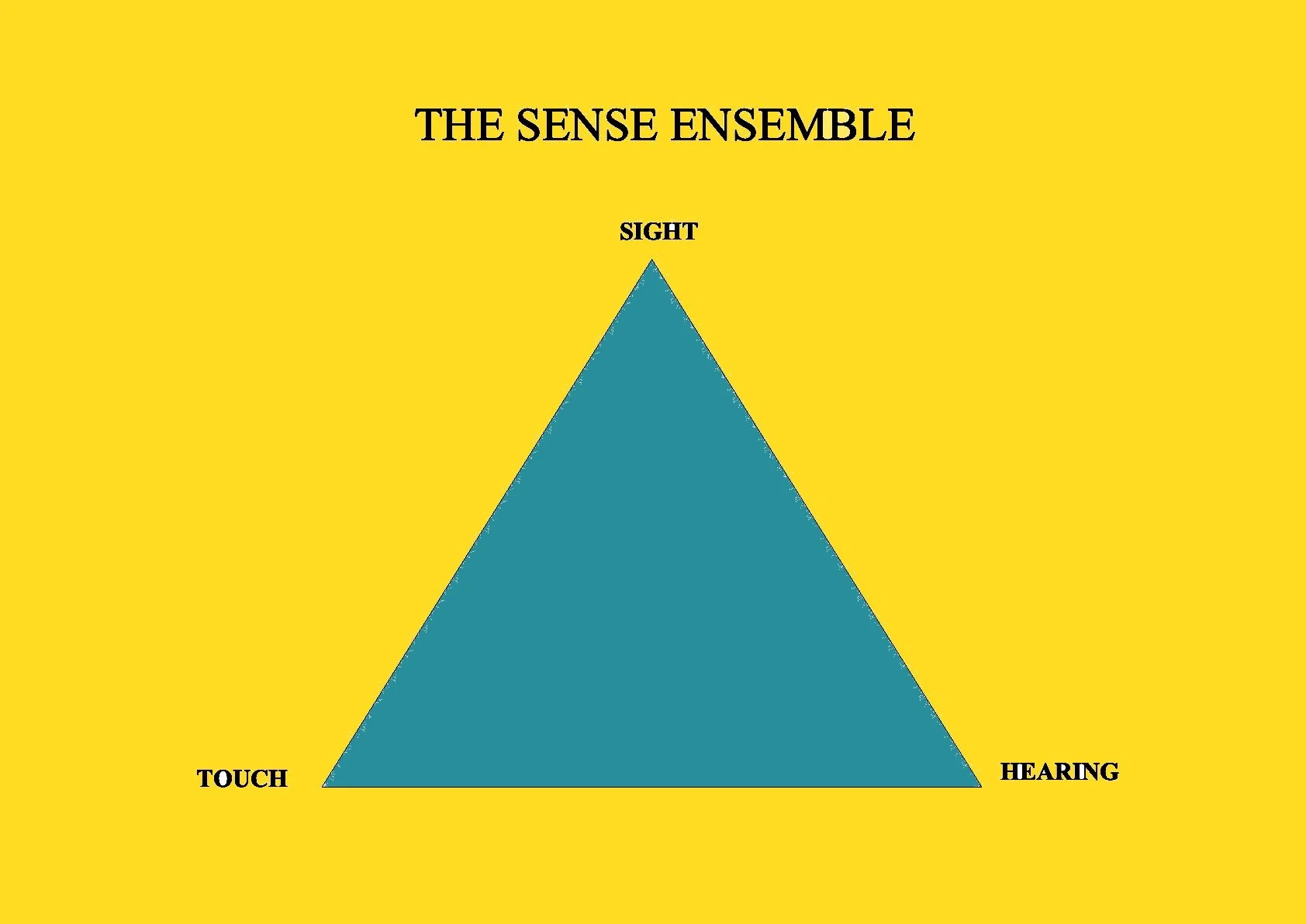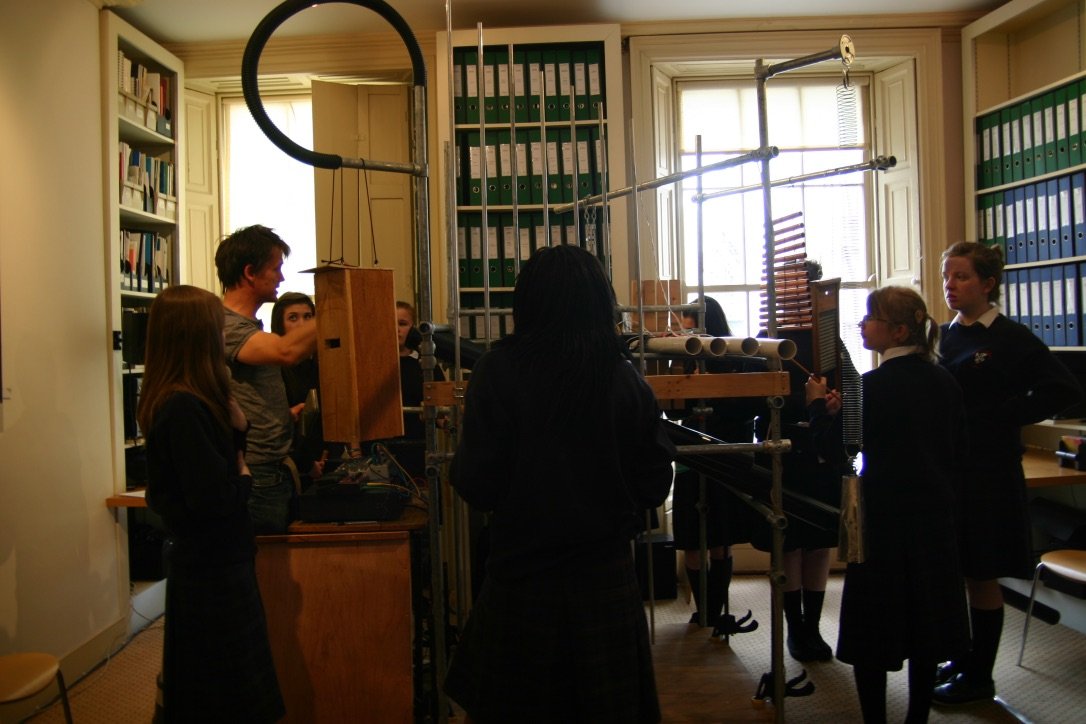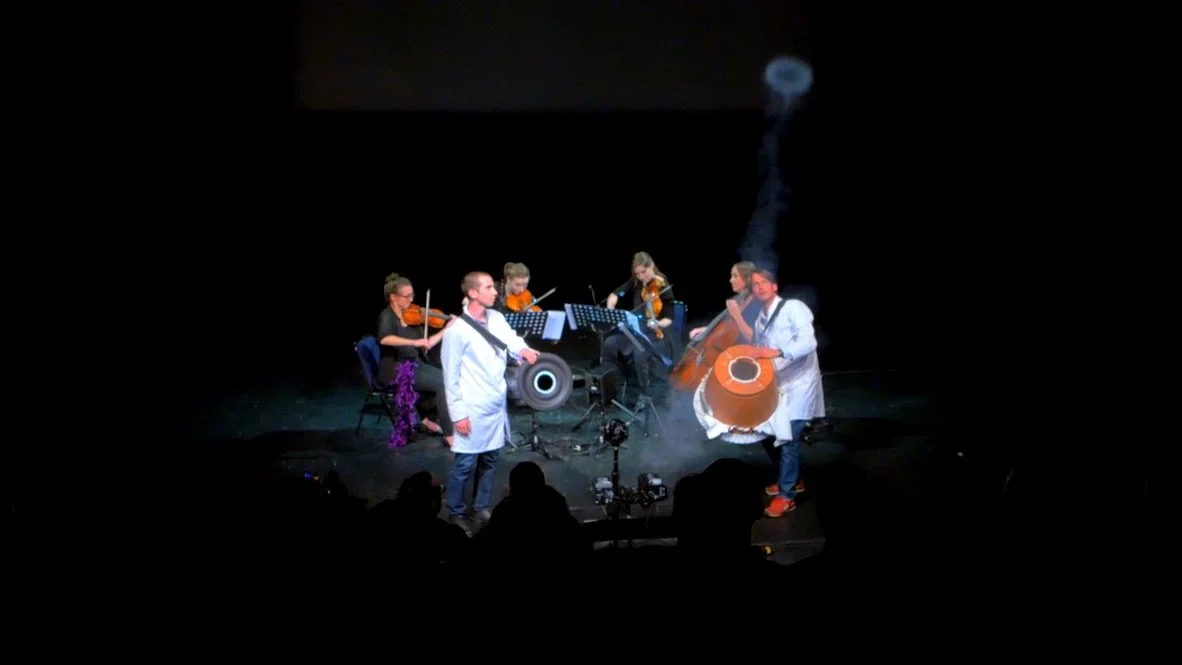Curious Adventures with Vibrations # 1: What is music? Why not ask a deaf person?
The Mystery of Music
As a composer, I’ve always found it hard to define music.
On the other hand, my profoundly deaf friend Dr Scrontium has always said: "Music is a curious adventure of vibrations we hear, feel, and see."
A number of years ago, he suggested I try the following simple experiment:
Hold a balloon for an entire day to see if it:
1) increases your awareness of vibrations and/or
2) makes you ‘listen’ to music differently.
Dr Scrontium has some pretty far-out schemes, like building machines designed not to work, but I chose one Saturday with my children to undertake the good doctor’s balloon experiment.
Music is all about vibrations, says Dr Scrontium.
As expected, the first thing I discovered was that my hands became far more sensitive to vibrotactile stimuli the instant I picked up the balloon. The balloon predictably acted as a resonator that amplified vibrations I might not normally be aware of.
The balloon immediately increased my sensitivity to vibrations.
I'll admit that I was initially thinking about this experiment only in terms of music. I remember spending the first hour sitting on the couch listening to records with my kids. The kids were climbing all over me to get to the balloon. I let them touch the balloon, of course, but I never let go of it myself.
The kids were climbing all over me to get to the vibrotactile balloon (photo by Noah Higgs).
Music is Multisensory
It was fascinating to see how different sources of vibrations from the records - drums, bass, guitar, cymbals - excited different parts of our hands differently: the tips of the fingers, the palm, the 'heel' of the hands. We also put the balloon on our lips, which were suprisingly sensitive.
Kissing a balloon to feel the vibrations of music.
Being a father, I couldn't simply sit on the couch all day, but had to get on with my daily chores. As I did all my jobs around the house, I naturally had to hold the balloon differently: under my arm and between my legs when I cooked and washed the dishes, between my head and the wall when I put on the kids’ shoes, etc.
Holding the vibrotactile balloon between my legs so I can perform household jobs with my hands while also experimenting.
To be honest, a couple of the balloons popped in the course of the day. One got too near the toaster, another brushed a sharp corner of the kitchen counter. The kids roared with excitement but, mindful of my experiment, I immediately filled another balloon and carried on.
I found that all the different parts of my body responded differently to the vibrations in the air. The bones in my skull, the softer skin and muscles in my arms . . . each part of my body had a different 'vibrotactile perspective'.
Holding the vibrotactile balloon between my head and the wall to keep my hands free.
I Can Hear Each Grain of Sand
We live in a small Irish village near the sea, so the kids and I took a walk on the beach and felt the crash of each wave through the balloon. I recall becoming conscious of tiny details in the musical mosaic of what normally seemed like a wash of white noise on any other beach-walk I'd taken. It was like we could feel each grain of sand rubbing together as the waves moved in and out. The balloon had given us seeming super powers! That is, until it got whisked away by the wind and scudded off along the beach like a latex tumbleweed, finally popping in the distance. More roars of excitement from the children. Luckily, I had another balloon in my pocket.
The kids and I on a walk, but the balloon is hidden! Possibly under my arm? (photo by Noah Higgs)
I started to notice something else as the day progressed. Initially, I would first focus on a sound and second observe how the balloon represented the vibration. But gradually, the opposite began to happen. I would experience first a vibration and then second look to identify the sound that had caused it. Eventually, I began feeling vibrations for which I had to work quite hard to find a sound, or 'sonically substantiate' (so to speak). For example, I'd detect a rumble and then spend a few minutes deciding if it was the boiler in the house turning on, or the washing machine spinning, or neither. Later in the day, I was delighted to realize that I could feel vibrations happening quite far away in the village that I couldn't even really hear: cars passing near the house, a neighbor's front door closing.
Feeling the World
In the evening, after the kids had gone to bed, I sat a few hours in the darkness of our sitting room focussing on feeling the world. To my astonishment, I could clearly feel the same waves I'd felt earlier while on the beach with the children. Except now I was at least 200 metres away from the ocean. On all the nights I'd sat in that room before, I'd never imagined those vibrations to be there. The earth was acting like one big balloon sharing the vibrations of the sea with me.
The earth is like one giant vibrotactile balloon.
But the most exciting and important discovery occurred when I put the balloon down. I was amazed to find that my heightened sensitivity to vibrations was maintained. That is to say, even without the balloon I was far more aware of a ‘vibrational reality’ than I had been before the experiment. It was as if a new dimension of the world had opened up that before had been closed.
My Multisensory Musical Work Over 15 Years
With the help of Dr Scrontium and many others, I've spent the past 15 years working with deaf individuals to explore the multisensory nature of music.
My basic principle is that musical experience involves a combination of hearing, sight, and touch, i.e. a sense ensemble.
Musical experience is a ‘sense ensemble’, involving a combination of multiple senses.
In 2010 I began working with St Mary's School for Deaf Girls in Dublin as composer-in-residence. The students and I created a band called the Sense Ensemble and developed techniques to work together musically. I built a large instrument called the Machine of Song based on the students’ unique musical perspective.
The Sense Ensemble perform the Machine of Song in the Contemporary Music Centre, Dublin in May, 2011 (photo by Amanda Feery).
From 2015 to 2018 I completed a PhD in Trinity College Dublin with my thesis entitled ‘The Sense Ensemble: An Approach to Music Composition for Deaf and Hearing Alike’. I was lucky to get funded for this by the Irish Research Council.
This work involved a number of performance experiments, which I called The Sense Ensemble Studies. Among other things, these involved the use of Irish Sign Language and smoke ring cannons to great effect.
I send out a musical smoke ring during The Sense Ensemble Study #2 in the Samuel Beckett Theatre, Dublin, with Neimhin Robinson and the Crash Ensemble in September 2017.
Recently I've been working with the University of Liverpool's Acoustic Research Unit (Dr Carl Hopkins and Dr Gary Seiffert) to explore vibrotactile stimuli more rigorously.
I conducted research last year in the University of Liverpool’s Acoustic Research Unit on vibrations in balloons.
I'm currently running the Multisensory Music Programme with 2 deaf classes in New Bawn County Wexford with support from Music Generation Wexford and the University of Liverpool. Because space is limited, I built a multisensory musical cart which I wheel from class to class. The cart has a small but powerful arsenal of vibrotactile technologies which help the deaf students participate musically.
Deaf students in New Bawn primary school in Wexford (Ireland) play on the multisensory musical cart I built last year.
Feel free to follow my weekly blog
Join me in next week’s post for more curious adventures with vibrations!












